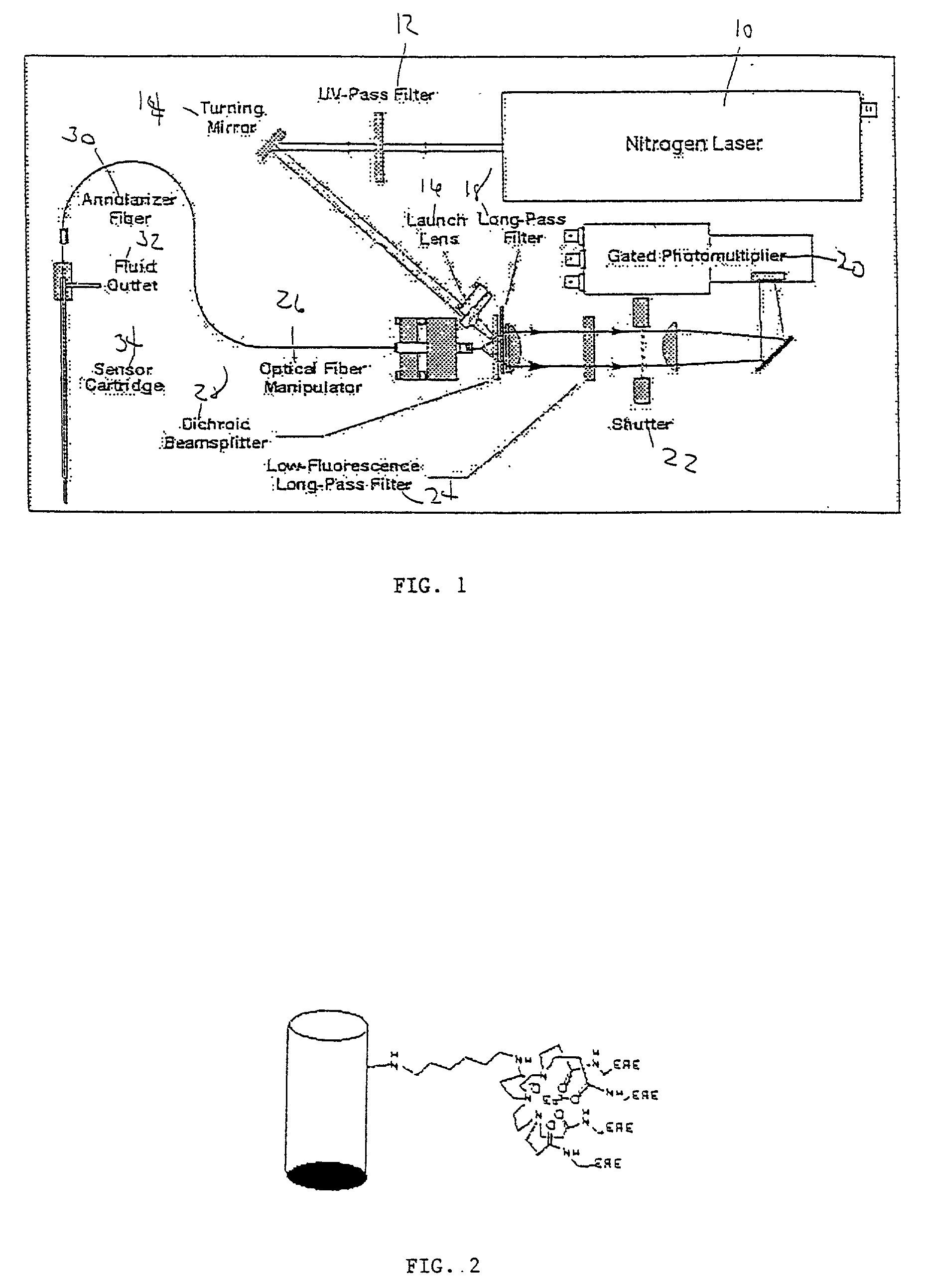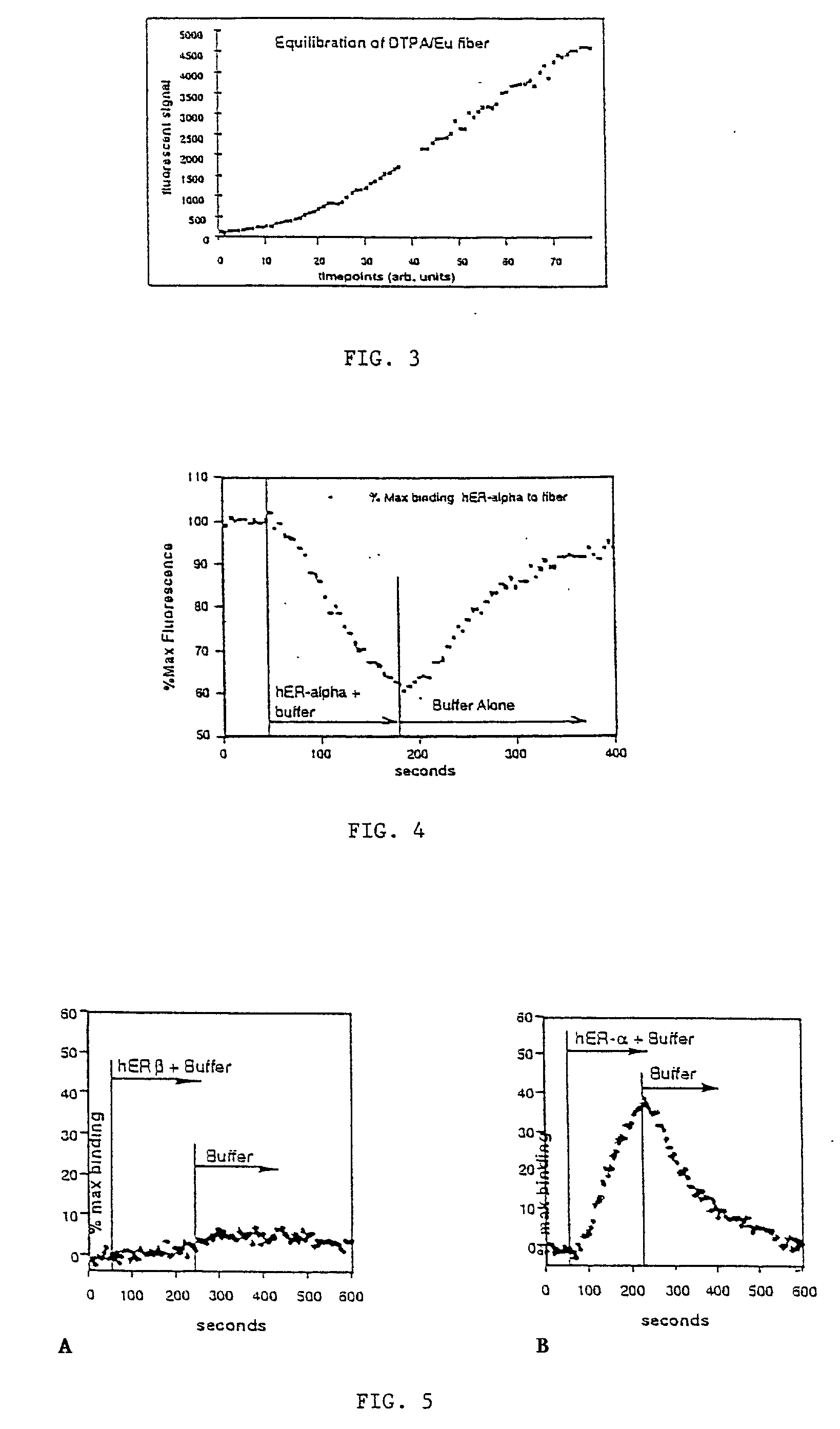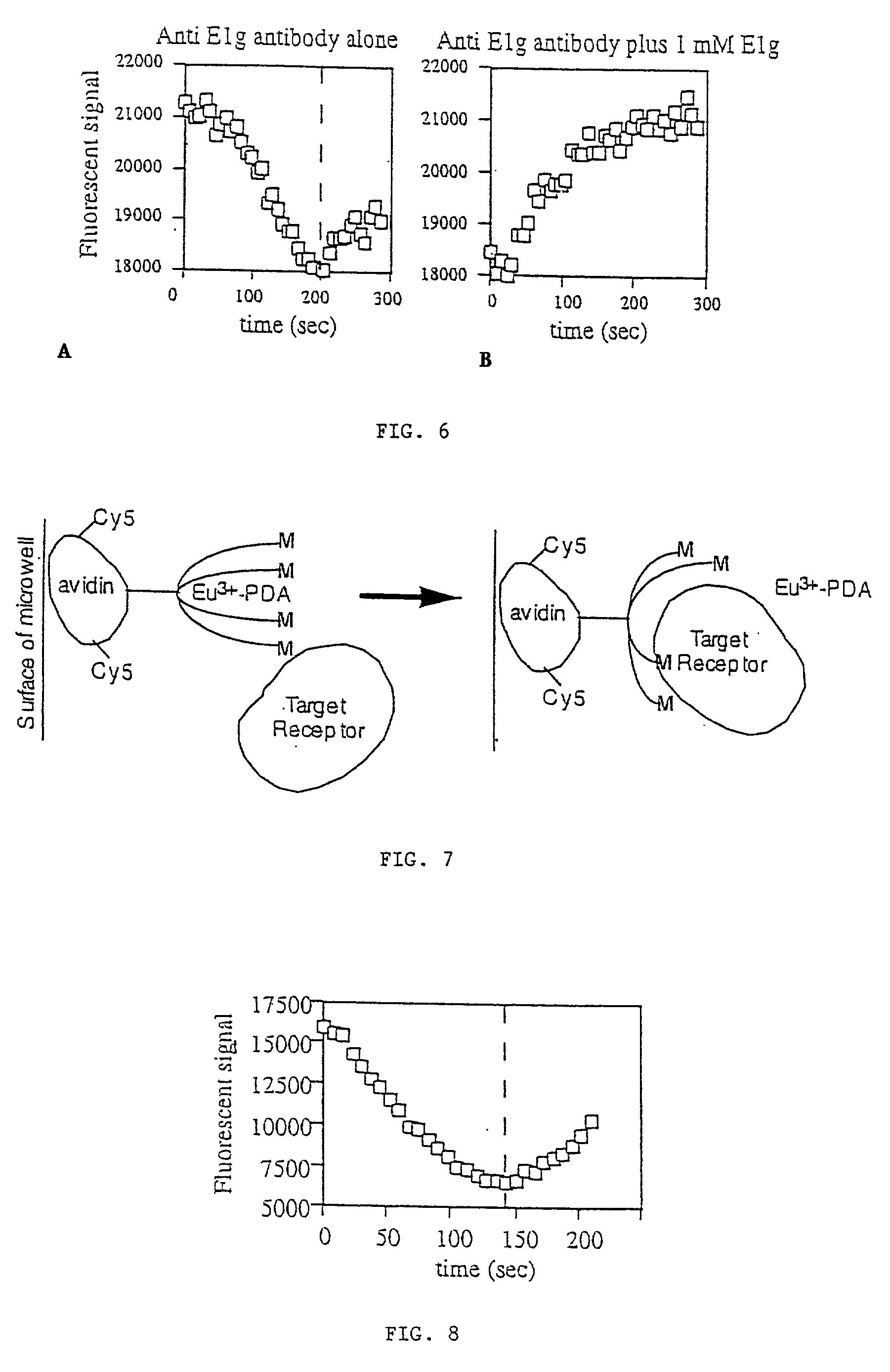Fiber-optic sensor array
a fiber-optic sensor and array technology, applied in the field of biochemical compound sensing technology, can solve the problems of increasing the time required before assay results can be reported, unable to read in real time, and unable to observe true kinetic molecular interactions
- Summary
- Abstract
- Description
- Claims
- Application Information
AI Technical Summary
Problems solved by technology
Method used
Image
Examples
example 1
[0063] This example demonstrate the use of the present invention to create a regenerable, label-free, evanescent fiber-optic biosensor for monitoring in real-time, molecular interactions between estrogen receptor modulators and both human estrogen receptor .alpha. (hER-.alpha.) and human estrogen receptor .beta. (hER-.beta.). This biosensor is both highly specific and reusable, and requires only 10-14 moles of receptor. This invention can be extended to any binding assay involving a free binding species (antibody, receptor, imprinted polymer, aptamer, phase display peptide, etc.) and a derivative or analog of the primary analyte molecule attached to a specifically designed chelate fluorophore. Additional extensions and embodiments of this invention are presented in Examples 2 and 3.
[0064] Method:
[0065] The present invention can be used as an assay method for free ligand, or as a method for measuring the concentration or activity of the receptor or other binding species. There is no ...
example 2
[0068] This example demonstrates the use of the present invention as a rapid assay method that can allow performing rapid, homogenous assays for monitoring the binding (possibly in real-time) of a first compound to a second specific recognition binding target, or the influence of a third compound on the binding of the first compound to its second recognition binding target. The assay can be used with single samples, or it can be, used as a mass sample screening assay to identify specific compound behaviors by using it with a microwell fluorescence plate reader.
[0069] Method:
[0070] Various assay methods are used in screening libraries of compounds produced in the pharmaceutical discovery process for specific biomolecular behaviors. Since pharmaceutical agents are sought that typically bind selectively to specific biological moieties such as receptors, enzymes, DNA sequences, etc., while possessing minimal binding to other biological moieties, measurement of the binding event alone ca...
example 3
[0078] This example shows the ability to use the present invention as a high-throughput screening method for compounds that act as endocrine disrupters.
[0079] Method:
[0080] Available methods for identifying substances having hormone-like activity typically are bioassays, which investigate the effect of a substance on cellular proliferation in primary cell culture, and biochemical assays, such as the effect of a substance on the ability of a natural hormone receptor to bind to ligand or to other components of a multi-molecular complex. None of these methods provides rapid, real-time determination of the hormone-like effect of a particular substance. Since hormone-like substances exert their action by binding to specific biological receptors, measurement of the binding event alone can provide a simple and rapid screen for candidate drugs. This document discloses a simple, rapid and real-time screening method, which is amenable for high-throughput screening for hormone-like substances....
PUM
| Property | Measurement | Unit |
|---|---|---|
| wavelength | aaaaa | aaaaa |
| wavelength | aaaaa | aaaaa |
| wavelengths | aaaaa | aaaaa |
Abstract
Description
Claims
Application Information
 Login to View More
Login to View More - R&D
- Intellectual Property
- Life Sciences
- Materials
- Tech Scout
- Unparalleled Data Quality
- Higher Quality Content
- 60% Fewer Hallucinations
Browse by: Latest US Patents, China's latest patents, Technical Efficacy Thesaurus, Application Domain, Technology Topic, Popular Technical Reports.
© 2025 PatSnap. All rights reserved.Legal|Privacy policy|Modern Slavery Act Transparency Statement|Sitemap|About US| Contact US: help@patsnap.com



